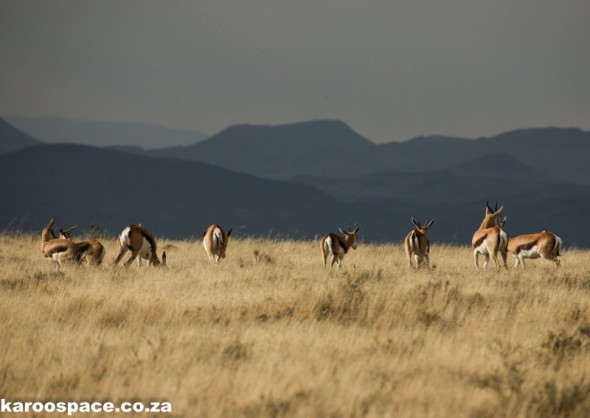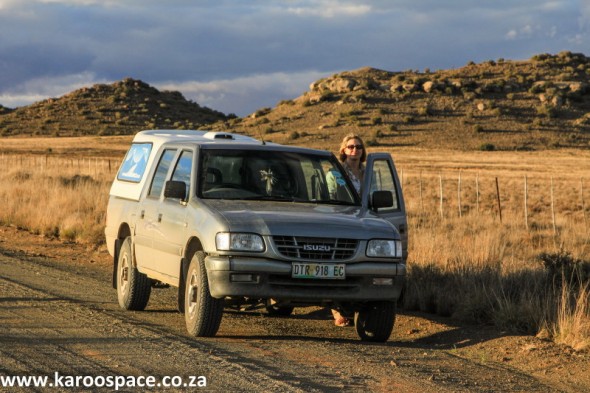
KAROO DIARY: In Search of a Keepsake
As a travel journalist, you can wander the world, see all its peoples, taste 105 different kinds of ice cream and stomp through a thousand museums – but you know you’re always skating on the surface of experience. You’ve only had one layer of Life’s Onion. What a privilege it was then, for my wife […]

As a travel journalist, you can wander the world, see all its peoples, taste 105 different kinds of ice cream and stomp through a thousand museums – but you know you’re always skating on the surface of experience.
You’ve only had one layer of Life’s Onion.

What a privilege it was then, for my wife Jules and me, to move to the Karoo early in 2007, plant our flag and set out to find the stories of the Dry Country.
We visited towns that would have given me the heebies as a young journo, especially when viewed in the middle of a summer’s day.

At first sighting, they came across as thin smears of civilisation on a dry crust of land.
Then came that first sunset, when the air cooled, the colours warmed and the wine was served on the stoep.
When the grim countenances creased up into smiles. When the kindness began and the stories started to flow.
Most people love a story. It’s natural. It goes back to when we all used to park around fires in caves, and one of us would recount the doings of the day.

There was a journey. A central character. A foible. A conflict and, if the story teller was any good, a twist in the tail of the tale.
The vast Karoo, covering 40 percent of South Africa’s land mass and spanning more than 100 settlements, is a great big spider web of stories.
From the legend of the diamond-eyed river snake of the Orange River, the one that sleeps in a deep crevasse somewhere down in the roaring Augrabies, to the 251 million-year-old Permian creature called the Bradysaurus who left his deep footprint on a farm outside Fraserburg; from the legend of the special ostrich that was kidnapped near Timbuktu and literally kick-started the era of the Feather Barons to the karretjiemense who roam the land looking for work and a way of life on the Lang Plaas, the verge on either side of the highway.
As we travelled across the Karoo, we looked for stories for a special series of books called Karoo Keepsakes.
We found them, on the farms around the Sunday lunch table, in a kitchen somewhere, around a bottle of Three Ships whisky and etched on the rocks where ancient Bushmen had passed.

We learnt about the inland ocean that used to be the Karoo, the rock formations like Cape Fold Mountains and the fossils that lie embedded everywhere.
We discovered the medicinal magic of aloes, the mixed blessing of a prickly pear and why the kokerboom (quiver tree) was inching southwards every year.
We were told the meaning of the level-headed hills and we felt the mystical atmosphere in the hills above Sutherland at the SALT observatory, alongside interesting scientists who live in a world of black stars, quasars, giant dwarves and the like.
As the months went by, our noses dropped deeper and deeper into the history books, the natural science papers and the records of the villages and towns that make up the Karoo.

And back in our neighbourhood of Cradock, we fell into a rhythm of country fairs, home concerts and more legends. We changed the way we lived. In the middle of winter, someone would phone up and say:
“There’s snow up in the Swaershoek!”
And, of course, we would drop everything and jump in the bakkie with our cameras and our beanies.
We developed the habit of watching the summer rain clouds and, if they looked particularly dramatic, we would drive out to the nearby Mountain Zebra National Park for that photo, the one where the goofy donkey with the stripes and the big ears stands in a majestic setting of mountains and thundering cloudscapes, in a pool of God’s light.
One day up there at the park, Jules turned to me, beaming from ear to ear, and exulted:
“This. This is the life…”

“The life” also includes commiserating with farmers when a sudden frost takes out five dozen angora goats in one night, or sharing the grief when a tourist falls asleep behind the wheel and the Karoo night claims his life, when a kudu steps in front of a vehicle and carnage ensues, and when the long months of drought finally break a man’s back and he packs his family off to the city.
We decided to promote the sizzle, the magic, of the arid areas of South Africa, the most people-friendly desert in the world.
One way to do this was to seek out the people who make the Karoo tick. And we found them.
Young Goths in small villages, Scottish runaway brokers in the Free State, blues singers in supper clubs, night owl quantum physicists in dusty dorps, after-care angels in the mountain lowlands, outsider artists at railway sidings, old-style watch makers in Settler country, egg painters who have discovered how to Feng Shui the Karoo, Bo-Sluis Baster teens who do the Nama Stap in the Richtersveld, fierce heritage activists who protect the priceless architecture of the Karoo and a bar owner who will look you in the eye and tell you simply:
“The Karoo is not for sissies…”
The Karoo Space e-Bookshop has been specially designed for the needs of South Africans living overseas and overlanders venturing across the Karoo.
Story and Photographs by Chris Marais


